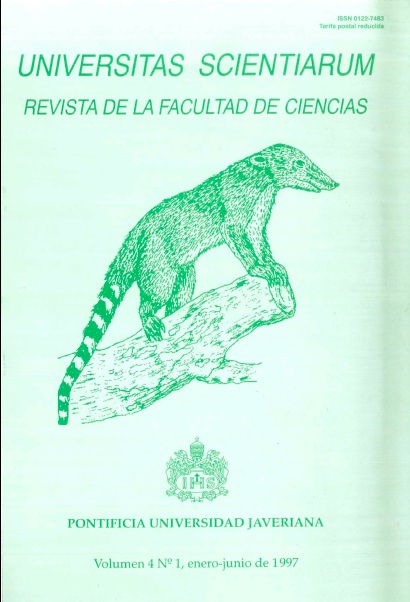Abstract
An analysis of RNA electropherotypes was carried out on rotavirus isolates from diarrheic samples. Of the 328 samples analyzed, 56 were positive forrotaviral RNA and these could be classified into four different electropherotypes, according to the electrophoretic mobilities of their various RNA segments. The differences among the various electrophoretic patterns were basically due to changes in the mobilities of the genomic segments 7, 8 and 9 which make up group III. However, all electropherotypes were compatible with the pattems considered to be characteristic for group A rotavirus, and were likewise classified as short pattems. The findings suggest a moderate genetic variation among the rotavirus strains affecting the infant population studied.Univ. Sci. is registered under a Creative Commons Attribution 4.0 International Public License. Thus, this work may be reproduced, distributed, and publicly shared in digital format, as long as the names of the authors and Pontificia Universidad Javeriana are acknowledged. Others are allowed to quote, adapt, transform, auto-archive, republish, and create based on this material, for any purpose (even commercial ones), provided the authorship is duly acknowledged, a link to the original work is provided, and it is specified if changes have been made. Pontificia Universidad Javeriana does not hold the rights of published works and the authors are solely responsible for the contents of their works; they keep the moral, intellectual, privacy, and publicity rights. Approving the intervention of the work (review, copy-editing, translation, layout) and the following outreach, are granted through an use license and not through an assignment of rights. This means the journal and Pontificia Universidad Javeriana cannot be held responsible for any ethical malpractice by the authors. As a consequence of the protection granted by the use license, the journal is not required to publish recantations or modify information already published, unless the errata stems from the editorial management process. Publishing contents in this journal does not generate royalties for contributors.



